1. Analysis of industry background and current situation
1.1 DeSci Overview
From the workshop-based production relied on human cooperation in the handicraft era to the factory system of steam power reconstruction in the era of mechanization; from the standardized economies of scale generated by assembly lines in the era of electrification to the global supply chain revolution triggered by computer technology in the era of information technology; to the current intelligent decision-making network driven by algorithm models in the era of AI - every technological revolution is reshaping the organizational form of production factors. The emergence of blockchain technology has realized "trust automation" for the first time through mathematical protocols, making it possible to confirm the on-chain rights of intellectual property rights, decentralized circulation of data assets, and value distribution dominated by smart contracts. Through knowledge penetration and data penetration storage, DeSci (Decentralized Science) is leading a disruptive technological paradigm revolution, trying to free science from the closed ivory tower, and the underlying logic of human production relations is undergoing a paradigm-level leap.
Previously, the DeSci track experienced a wave of hot secondary markets and has gradually cooled down. In the previous wave, it was an expected financial manifestation, which appeared in the form of Memecoin and other forms. We cannot deny the DeSci track because of this.On the contrary, we should conduct in-depth analysis at the moment to understand the real value behind DeSci and its future impact on the transfer of technological paradigms.

Hard Technology Paradigm Migration
The core philosophy of DeSci includes the following key aspects:
- Incentive mechanism: Reshaping the distribution of scientific research value
DeSci has completely changed the value distribution model in traditional scientific research by introducing a blockchain-based incentive system. Researchers can gain academic recognition and economic returns through token economy, NFT papers or reputation systems, which not only inspires widespread sharing of knowledge, but also provides new ways to monetize scientific research results.
-
De-mediation: Reconstructing the power structure of scientific research
In traditional scientific research models, fund allocation and results review are often controlled by a few centralized institutions, resulting in uneven resource allocation and limited innovation. DeSci delegates power to the scientific research community through community-driven models such as DAO (decentralized autonomous organization), realizing the democratic allocation of resources.
-
Lower the threshold for scientific research: Promote the democratization of scientific research
DeSci has greatly lowered the threshold for scientific research participation through decentralized infrastructure (such as open data platforms, distributed computing resources, etc.). Whether it is researchers, independent scientists, or citizen scientists in developing countries, they can equally access global scientific research resources and contribute.
-
Data Transparency: Rebuilding Academic Trust System
The traceability characteristics of blockchain technology provide technical guarantees for the transparency and verifiability of scientific research data. From experimental design to data collection to results release, every link can be recorded and publicly verified. This can effectively curb academic misconduct and enhance public trust in scientific research.
The essence of DeSci is a return to the essence of science—science should be the common wealth of all mankind, not the exclusive field of a few institutions or elites. In the traditional scientific research model, the creation and dissemination of knowledge are controlled by layers of intermediaries, resulting in science gradually deviating from its original intention of openness and collaboration. DeSci uses technical means to try to break these barriers and bring science back to its decentralized nature. It is not only a technological innovation, but also a revolution in the philosophy of science.
1.2 The essential differences between DeSci and traditional scientific research systems
1.2.1 Collaboration mode: From split confrontation to organic collaboration
The traditional scientific research system presents a typical "triangle separation" structure: the funding institutions (government/enterprise), scientist groups and publishers form a closed closed loop of interests, but lack a value alignment mechanism.
-
Funders often assess scientific research output through short-term KPIs, forcing scientists to pursue "publishable results" rather than solving substantive problems;
-
In order to obtain ongoing funding, scientists have to devote a lot of energy to project declaration and compliance processes rather than in-depth research;
-
Publishers charge high subscription fees through monopoly academic communication channels (the annual revenue of the global scientific research and publishing market exceeds US$19 billion) without providing reasonable returns to knowledge producers.
This fragmentation causes more than 30% of global research funds (about US$60 billion) to be wasted every year in repetitive research or inreproducible experiments. DeSci reconstructs tripartite relationships through a smart contract-driven collaboration framework:
-
Funders can pool funds through DAO and set long-term goals (such as “delaying aging”), and the community votes to decide on resource allocation;
-
Scientists receive token rewards through data contribution, open source code or experimental reproduction, and economic returns are directly linked to actual value creation;
-
Publisher roles are replaced by NFT papers and decentralized storage, and knowledge dissemination costs are reduced by more than 90%.
1.2.2 Crossing the "Gao of Death": From linear fracture to closed-loop acceleration
The essence of the traditional transformation of industry, academia and research is the failure of the knowledge transfer system: in the chain of basic research (paper) → application development (patent) → commercial transformation (product), each stage is dominated by different entities and lacks incentive mechanism connection. For example, the National Institutes of Health (NIH) invests US$45 billion per year, but only 0.4% of the basic research results enter the clinical trial stage; the core problem is that pharmaceutical companies block experimental data to protect commercial institutions, resulting in repeated trial and error (US$2.6 billion per drug in the preclinical research stage alone); at the same time, venture capital tends to mature projects in the later stage, and early breakthrough research is difficult to obtain support.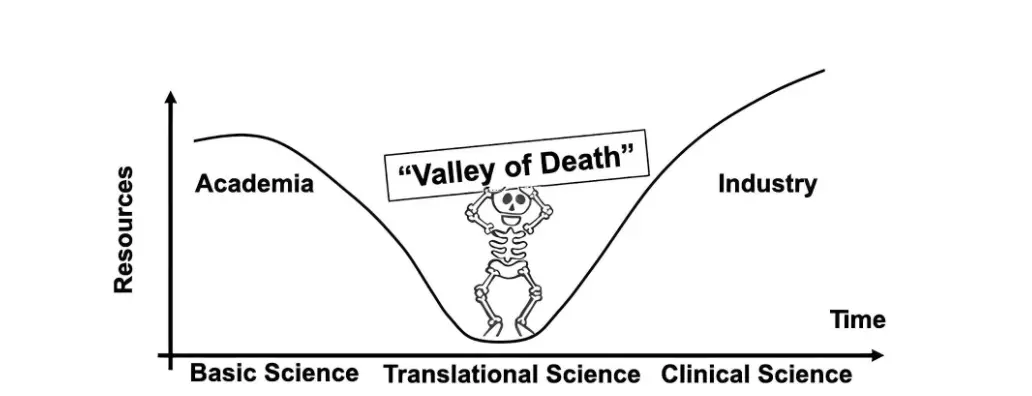
By introducing blockchain and Web3 technologies, DeSci aims to break the gap in interest distribution in traditional scientific research and promote more efficient scientific research collaboration. Unlike the island attributes of the traditional model, DeSci allows funders, scientists and publishers to achieve deeper cooperation through decentralized mechanisms to solve the problems of funding, data sharing and transparency in scientific research results. DeSci builds a transformation accelerator through technology-economic paradigm innovation:
-
Technology IP tokenization: For example, the Molecule platform converts drug research and development intellectual property rights into IP-NFT, allowing investors to purchase rights in segments. Research shows that this method shortens the financing cycle of early biomedical projects by 60%;
-
Data liquidity: Platforms such as Ocean Protocol have established a data trading market. Researchers can safely share data through privacy computing technology and obtain profits. More than 20PB of biomedical data have been put on the chain;
-
Community support mechanism: VitaDAO uses the three-stage token allocation model of "research-development-commercialization" to allow basic researchers to obtain 5%-15% of the continuous share through smart contracts after the drug is launched, forming a closed-loop incentive.
-
Efficient fund allocation: Through DAO and tokenized economic models, DeSci provides transparent and efficient funding support to avoid waste of resources. For example, VitaDAO provides funding for anti-aging research through DAO and supports 24 projects.
-
Decentralized Publishing: DeSci has changed the way scientific research results are produced and disseminated, ensuring that results are transparent and verifiable through blockchain, reducing publishing costs and reducing the monopoly impact of traditional publishers.
-
Attribution and transparent review of scientific research results: The immutability of blockchain ensures the ownership of scientific research results. The smart contract records the review process, improves the transparency of review, and ensures the fairness and efficiency of research.
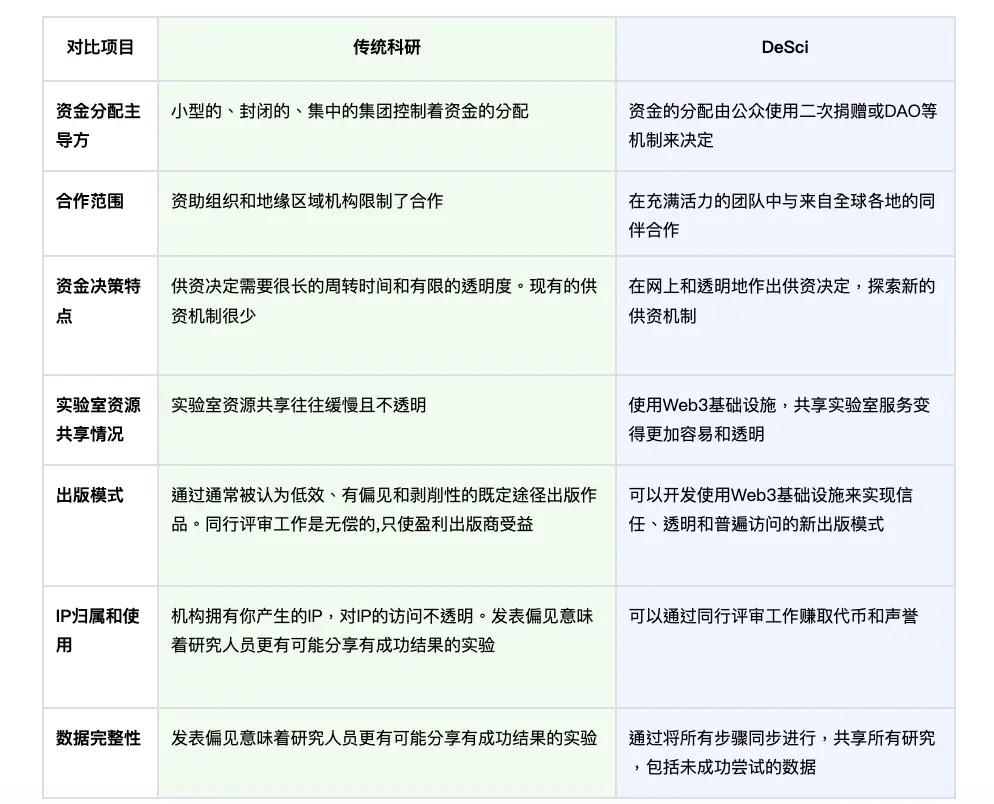 Comparison of traditional scientific research with DeSci, source: Bio.xyz
Comparison of traditional scientific research with DeSci, source: Bio.xyz
In general, DeSci promotes transparency, efficiency and collaboration of scientific research through decentralized technology, making up for various shortcomings in the traditional scientific research model. It not only changes the process of fund allocation, data sharing and publishing, but also accelerates the transformation of scientific research results through community cooperation, promotes more openness and inclusive science, and creates a more promising scientific research environment.
1.2.3 Value distribution: From centralized extraction to ecological win-win
Under the traditional system, scientific research value is monopolized by a few centralized nodes:
-
Publisher Elsevier's gross profit margin has remained at 37% for a long time, far exceeding technology giants such as Apple (24%);
-
The processing fee for a single paper in the top journal Nature is as high as US$11,390, but 97% of reviewers work free of charge;
-
Pharmaceutical giants rely on patent barriers to make huge profits (the average net profit margin of the top ten pharmaceutical companies in the world is 18.7%), while the original discoverers are often marginalized.
In contrast, DeSci reconstructs allocation logic through programmable value streams:
-
Contribution quantification: Transform paper citations, code submissions, experimental reproduction and other behaviors into tradable credit assets with the help of on-chain reputation systems (such as DeSci Labs’ Karma scores);
-
Dynamic distribution: Smart contracts automatically distribute income. For example, the BioDAO project injects 30% of patent income into the community treasury, 45% are allocated to researchers according to their contributions, and 25% are rewarded to early investors;
-
Long Tail Activation: African scientists reduce research costs by 70% through LabDAO's shared laboratory equipment and receive global financial support through data contributions.
The difference between DeSci and traditional scientific research is not only an upgrade of technical tools, but also a reconstruction of production relations. When scientific breakthroughs are no longer subject to institutional boundaries, geographical restrictions or power rent-seeking, human beings may enter a new era of "collective wisdom explosion." Just as the open source community of GitHub has spawned ChatGPT, the collaborative innovation of millions of researchers in the DeSci ecosystem may solve complex problems that individual countries or businesses cannot overcome in the next decade (such as Alzheimer's disease therapy or controlled nuclear fusion). The ultimate goal of this change is to return science to its purest essence: based on evidence, openness and sharing, and serving the well-being of all mankind.
1.3 Market size and key players
1.3.1 Market Size
Currently, the market size of the DeSci field is close to US$1 billion, and although it is still in the early stage of exploration, its compound annual growth rate (CAGR) is expected to exceed 35% in the next five years, showing the potential for exponential expansion. This growth is not only due to the mature application of blockchain technology, but also due to the pain points of the global imbalance in scientific research funding allocation: the traditional scientific research market invests more than US$200 billion per year, but a large amount of funds are wasted due to bureaucratic processes and inefficient management of centralized institutions. The rise of DeSci is reconstructing this pattern: through tokenized incentives, decentralized governance and open source collaboration, its market size is expected to exceed US$50 billion by 2030, becoming a vertical track that runs side by side with finance and AI in the Web3 field.
DeSci's potential has attracted double attention from the crypto industry and academia. Ethereum founder Vitalik Buterin has repeatedly publicly emphasized the disruptive significance of DeSci to "open science"; crypto leaders such as Binance founder CZ, BitMEX co-founder Arthur Hayes, Coinbase CEO Brian Armstrong endorsed them through investment and platform. In addition, top investors such as Paradigm co-founder Fred Ehrsam and former Coinbase CTO Balaji Srinivasan have viewed DeSci as the core direction of the “next generation of scientific research infrastructure.” Head VCs such as a16z, Polychain Capital and Digital Currency Group have also been deployed, among which biomedical DAOs (such as VitaDAO) and decentralized data protocols (such as Ocean Protocol) have become the key bets for capital.
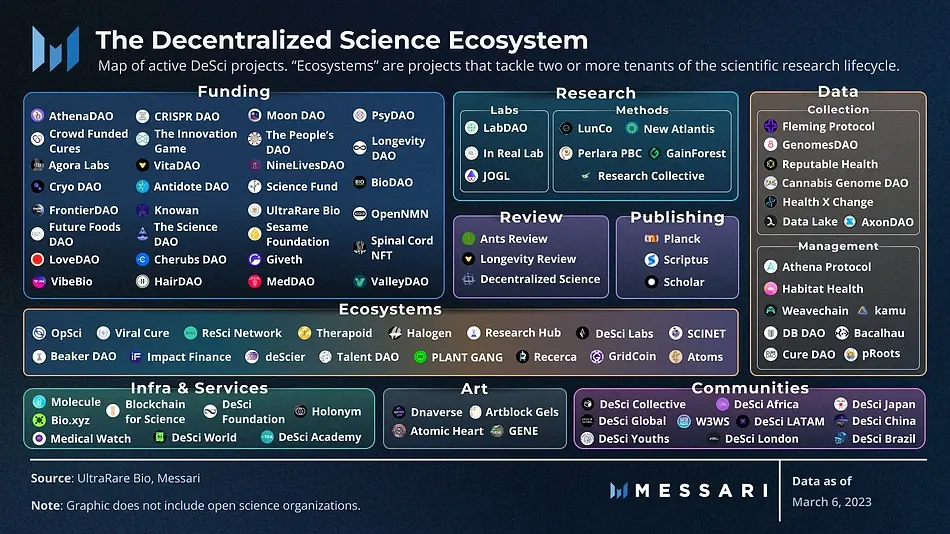 DeSci Ecological Project Map, Source: Messari Research
DeSci Ecological Project Map, Source: Messari Research
1.3.2 Main players
1.3.2.1 Molecule
Founded in 2021, Molecule is a decentralized protocol dedicated to subverting traditional biotech R&D models. The project aims to establish a completely new financing ecosystem for early biological research and to introduce biotechnology intellectual property (IP) into the chain in an innovative way, pioneering the concept of IP-NFT and is known as "OpenSea in the field of biotechnology".
Based on IP-NFT, Molecule has built a market for transformational research aimed at promoting efficient connection between researchers and funders. On the Molecule Discovery platform, researchers can submit research proposals, and funders can evaluate proposals and negotiate cooperation terms with the research team. In this way, Molecule provides strong support for the transformation of basic research into practical applications, promoting the rapid implementation of medical research from theory to practice. As a decentralized drug research and development platform, it tokenizes biomedical intellectual property rights through the IP-NFT model, which has promoted research capital flows of more than US$200 million and established cooperation with pharmaceutical companies such as Pfizer and Bayer.
1.3.2.2 Vitadao
VitaDAO is a community-driven decentralized autonomous organization (DAO) focused on providing early funding for longevity research. VitaDAO has proposed a new solution to the current situation of early funding shortages and technology monopoly in traditional biopharmaceutical fields, especially in Changsheng Research. By introducing blockchain and crypto-economic incentives, VitaDAO is committed to helping scientific research projects in the longevity field get key initial funding. In return, VitaDAO will directly hold intellectual property (IP) and data rights to support the research findings and integrate these rights into a publicly accessible portfolio. The organization promotes the further development and utilization of these intellectual property rights through the authorization and commercialization of data markets or traditional biopharmaceuticals, while achieving the tokenization of assets and issuing native governance tokens - $VITA. Individuals or organizations can obtain $VITA tokens by contributing work, funds or other resources (such as data or intellectual property). Owners holding $VITA can participate in the curation and governance of VitaDAO assets and their research.
1.3.2.3 BIO Protocol
As the first project in the DeSci field to receive investment from Binance Labs, BIO Protocol has attracted widespread attention. In addition to Binance Labs, the project has also received strong support from a number of well-known venture capital firms in the crypto and biotech sectors, including 1kx, Boost VC, Sora Ventures, Zee Prime Capital, and Northpond Ventures, a biotech fund with a scale of more than $3 billion. In November 2024, BIO Protocol [9] successfully completed community financing in the creation stage, with a total amount of US$30.3 million, marking an important step in the project in community support and decentralized governance.
The core mission of BIO Protocol is to promote the rapid development of biotechnology. Through this agreement, patients, scientists and biotechnology professionals around the world can jointly participate in funding, building, and sharing tokenized biotechnology projects and intellectual property (IP), thereby injecting more possibilities into innovation in the field of biotechnology. BIO Protocol's Launchpad platform will provide more efficient financing and liquidity support for innovative projects in the field of DeSci, and accelerate the implementation of biotechnology by promoting the creation and development of BioDAO. Project founder Paul Kohlhaas revealed that BIO's Launchpad and token transfer capabilities are scheduled to be officially launched in the first quarter of 2025. BIO Protocol focuses on the reproducibility of experiments, builds an open source scientific research protocol library, and reduces global collaboration costs through standardized processes and on-chain verification. It has currently covered more than 1,200 biological experiments.
1.3.2.4 Ocean Protocol
Ocean Protocol has received joint investment from Digital Currency Group and Jump Capital, and completed a US$31 million Series B financing led by Borderless Capital in 2023, with a valuation exceeding US$1 billion. Its core mission is to build a decentralized data economic infrastructure and solve the problem of scientific research data silos. Two major technological breakthroughs have been made: 1. Compute-to-Data: Running the analysis algorithm without moving data, Mayo Clinic has increased the efficiency of breast cancer genome analysis by 35 times; 2.Data NFT: Supports data set rights confirmation and hierarchical transactions, and has hosted 20PB of high-value biomedical data. In addition, Ocean Protocol has cooperated with the Food and Agriculture Organization of the United Nations to build a global agricultural research data pool, covering 2.3 million data sets in 67 countries; the data transaction volume in Q2 2024 reached US$170 million, and the number of privacy calculation requests increased by 220% month-on-month.
Its CEO Bruce Pon announced that it will integrate federal learning and ZK-proof technology in 2025 and launch a "cross-chain data federation" to support the safe sharing of clinical data among pharmaceutical companies.
1.3.2.5 Gitcoin Grants
Gitcoin Grants received strategic investment from the Ethereum Foundation and Protocol Labs. In 2024, a16z received an additional $15 million in funding, with a cumulative financing of $68 million. Its core mission is to drive the democratization of open source scientific research crowdfunding through quadratic financing. Gitcoin Grants has funded a total of 1,700 open source science projects, with a fund utilization rate of 3.2 times higher than traditional scientific research funds. It is planned to launch "influence derivatives" in 2025, allowing investors to conduct forecast market transactions based on the social value of scientific research results.
1.3.2.6 Lab DAO
LabDAO has received support from Vitalik Buterin Personal Angel Investment and Arweave Eco Fund, and completed a US$12 million seed round led by Pantera Capital in 2024.The core mission is to build a distributed laboratory network and lower the threshold for obtaining global scientific research resources. LabDAO has achieved open source 1,400+ biological experiment SOPs, with an on-chain verification pass rate of 92%. In addition, it has connected 420 professional instruments in 67 countries, and the African team has reduced R&D costs by 70%. Founder Niklas Rindtorff said that the "automated experimental protocol engine" will be launched in 2025, which will achieve fully automatic execution of 50% basic experiments through AI+ robots.
1.3.2.7 Research hub
ResearchHub was founded by Coinbase CEO Brian Armstrong. Similar to GitHub’s revolutionary role in the field of software engineering, ResearchHub firmly believes that scientific records should not be bound behind paywalls or confined to academic ivory towers, but should become a public resource accessible to everyone. ResearchHub’s core mission is to break the closed nature of traditional academic research. By providing a completely open, paywall-free platform, ResearchHub allows both scholars and non-scholars to participate in scientific research in a transparent and collaborative way. The abstracts on the platform are written in easy-to-understand English, which further lowers the threshold for obtaining scientific knowledge and allows more people to understand and participate in scientific discussions. To inspire this open collaborative behavior, ResearchHub introduces ResearchCoin to reward users who actively contribute and share research results.
On ResearchHub, researchers are free to publish articles (whether preprinted or postprinted) and exchange opinions in an open forum dedicated to discussing related research. This model is designed to solve the inefficiency problem of the current academic publishing system. From applying for funds, completing research, submission, peer review to final publication, the traditional process often takes 3-5 years, which seriously slows down the pace of scientific progress. ResearchHub believes that through its open and collaborative platform, the efficiency of scientific research can be increased by at least one order of magnitude.
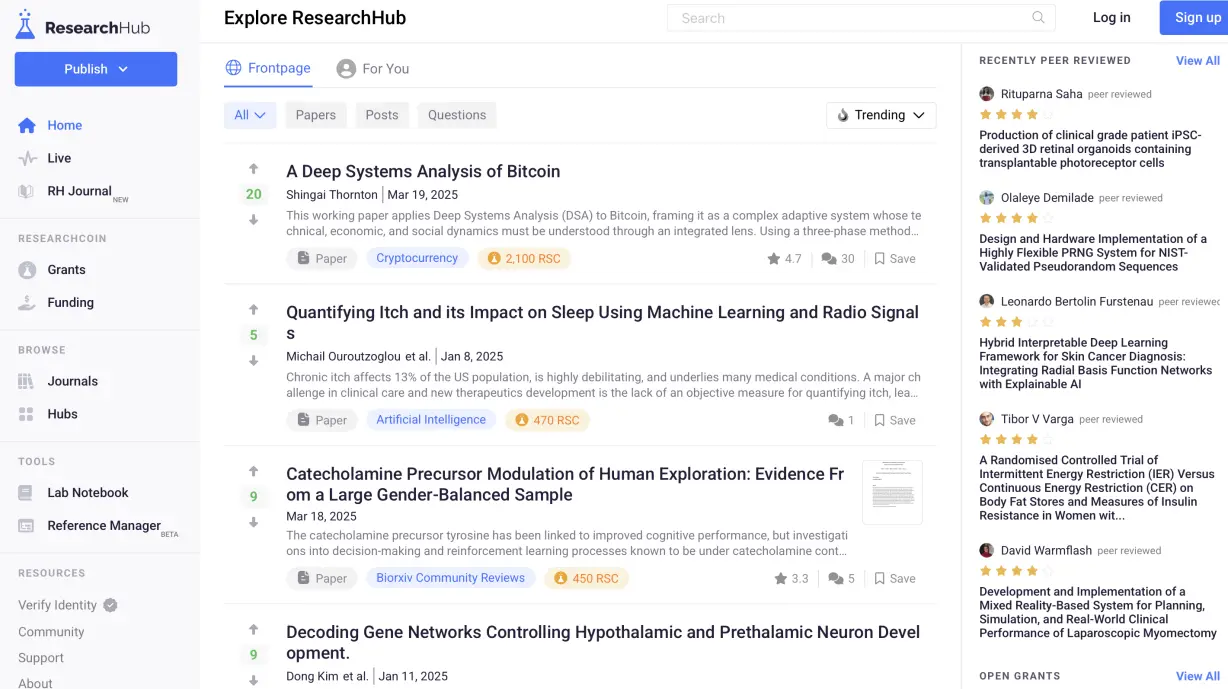
ResearchHub interface example
2. Value Assessment
Comparison of DeSci with other Web3 fields
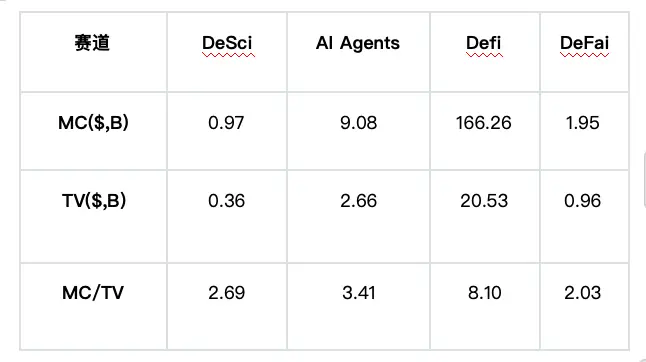
The current overall market value of the DeSci track is about US$1 billion, with an average daily trading volume remaining in the range of 8 million to US$12 million. The market value/trading volume ratio (MC/TV) reaches 8-15 times, which is significantly higher than traditional technology stocks (the S&P 500 average MC/TV about 0.3 times) and even the mainstream cryptocurrency track (the average DeFi MC/TV about 3 times). This anomaly ratio reveals the deep logic of the market:
-
Expected premium: Investors regard DeSci as a "DeFi revolution in scientific research" and are willing to pay a premium for a technology vision that has not yet been fully implemented. Similar phenomena have occurred in IPFS (MC/TV peak of 28 times) and DeFi Summer (MC/TV 22 times in the early stage of COMP launch), while DeSci's current valuation is still within a reasonable range of the early stages of similar technologies.
-
Structural differentiation: Top projects (such as Molecule and Ocean Protocol) account for 65% of the market capitalization share, but their trading volume only accounts for 30%, indicating that capital is more inclined to hold core infrastructure for a long time; while small and medium-sized projects (such as LabDAO and ResearchHub) account for a low market capitalization share, but contributes 70% of the trading volume, reflecting the market's speculative layout of early innovation targets.
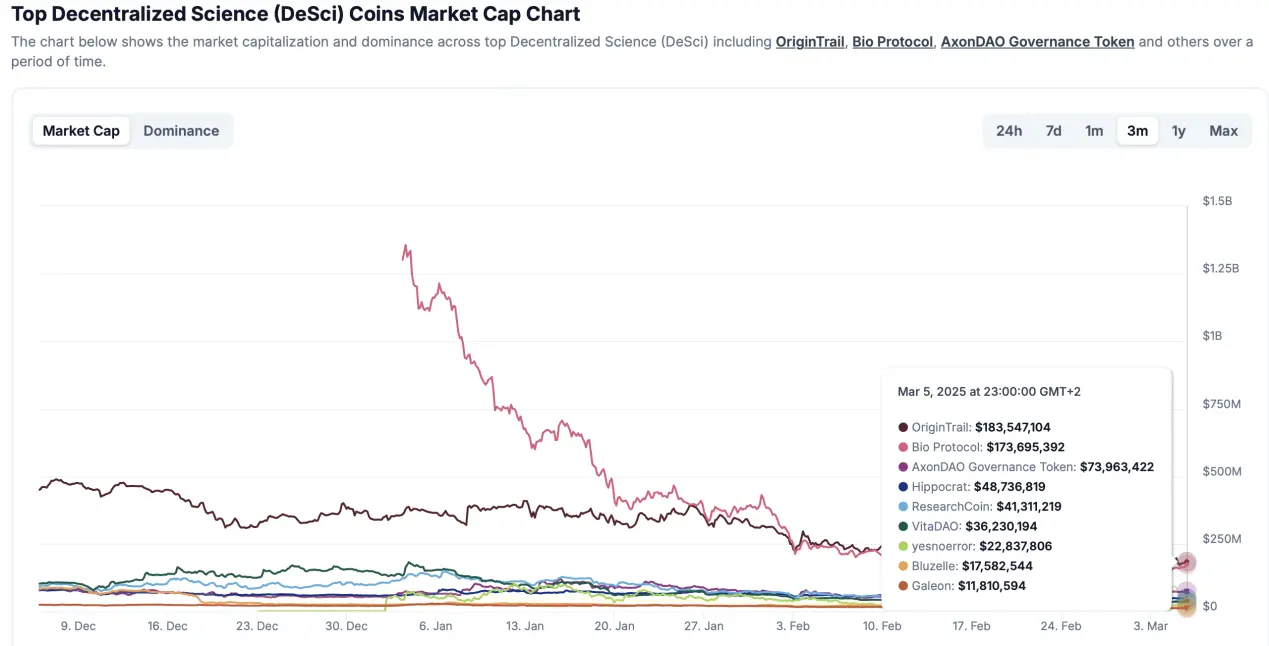
DeSci related tokens, source: Coingecko
Although DeSci is small overall, the participation of institutional investors has revealed unique characteristics:
-
The logic of heavy holdings of leading funds: a16z In the investment portfolio in the DeSci field, 80% of funds flow to underlying protocols (such as data storage, IP tokenization tools), and only 20% are invested in application-level projects, showing their persistence in the "infrastructure first" strategy. This is highly similar to their early path to investing in Ethereum (2014) and Coinbase (2013).
-
Behavior pattern of giant whale: On-chain data shows that 55% of the addresses holding more than $100,000 DeSci tokens have been held for more than one year, far higher than the 28% of the cryptocurrency market average. This type of investors focuses more on technology roadmaps than short-term price fluctuations, such as the staking rate of VitaDAO token $VITA has remained above 72% for a long time.
-
Cross-track collaboration: Traditional pharmaceutical companies have begun to acquire innovative resources through the DeSci ecosystem. For example, Pfizer outsourcing early drug discovery through the Molecule platform in the form of an NFT license, saving 40% of R&D costs. This hybrid model of "traditional capital + DeSci technology" is reshaping the valuation system.
In addition, in the DeSci track, the explanatory power of traditional financial indicators is ineffective and a new evaluation framework is needed. For example: Number of citations of papers: NFT papers on the DeSci Labs platform receive an average of 7.2 citations, which is 3 times that of traditional open access journals.
3.Future development forecast
3.1 Innovation project analysis: Python——The intersection of brain-computer interface and crypto economy
Three months after Neuralink successfully achieved the first personal brain-machine interface implantation, a breakthrough study by the Neiry Laboratory of Moscow State University [10] quickly caused a sensation in the crypto community. The lab has implanted an artificial intelligence chip into an experimental mouse called Pythonia and connected it to a customized GPT and DeepSeek model, allowing it to answer simple yes/no questions through brainwave control buttons. This seemingly advanced experiment not only reveals the potential for the integration of biology and artificial intelligence, but also gave birth to PYTHIA tokens, whose market value soared to $50 million in just 10 days after its release, becoming one of the most controversial cryptocurrency stories in the Web3 field. The Python project not only demonstrates the broad prospects of brain-computer interface technology, but also creates a new "biological mining" model, converting brain waves into tradable digital assets, marking the birth of the biodata economy.
Today, the market value of PYTHIA tokens has steadily rebounded from its lowest point of $4 million to $11 million. Unlike other short-lived Meme projects, Pythonia has successfully gained a foothold in the DeSci field through continuous development and innovation. Even in the overall market downturn, PYTHIA tokens still show strong upward momentum. So, what exactly is Pythonia? Why can it cause such a stir in the crypto world?
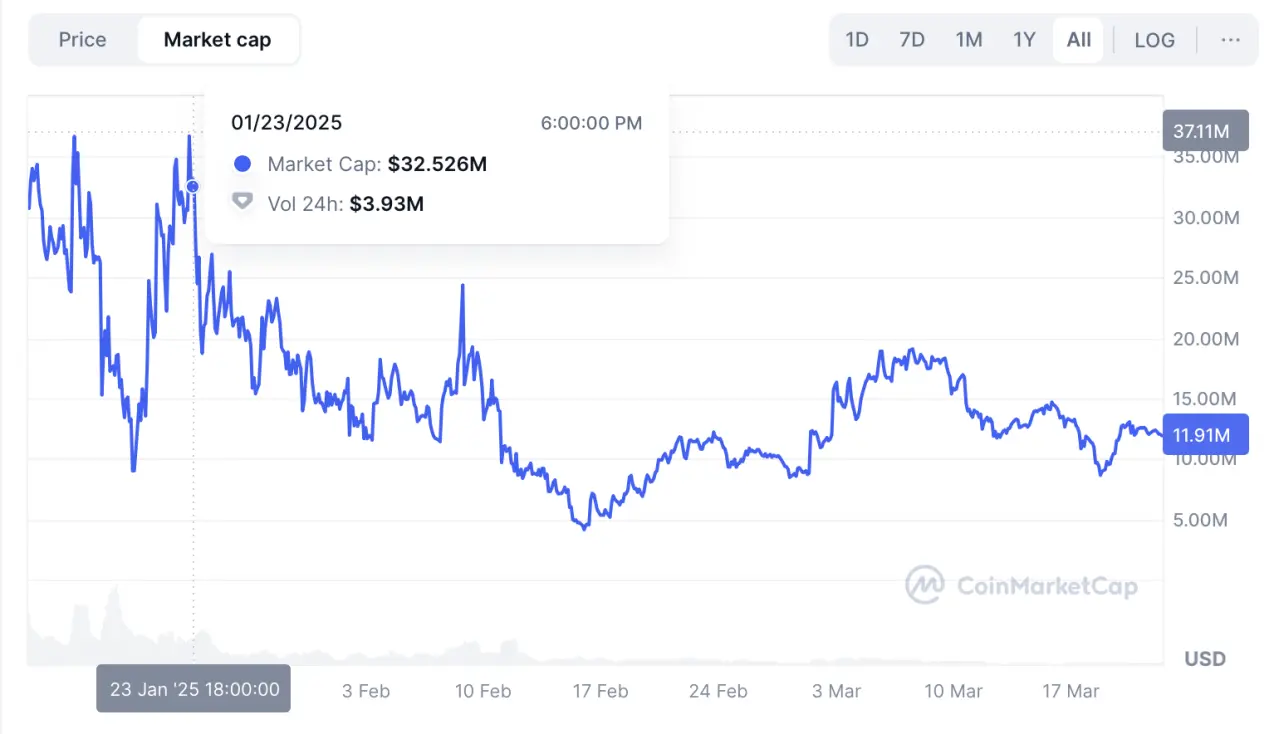
The core of the Python project lies in its pioneering "brain-computer interface encryption singularity" technology. Neiry's laboratory connected the brain of experimental mouse Pythonia with a customized GPT-4 model, successfully transforming brain wave signals into programmable instructions, realizing two-way interaction between biological entities and artificial intelligence. This technological breakthrough not only includes neural pulse language (converting brain waves into executable instructions), but also covers the assetization of brain wave data - converting brain wave data into tradable digital assets through ERC-1155 standard NFT. Based on this experiment, the Pythia project quickly evolved from a scientific experiment to a symbol of the crypto economy and gave birth to the $PYTHIA token.
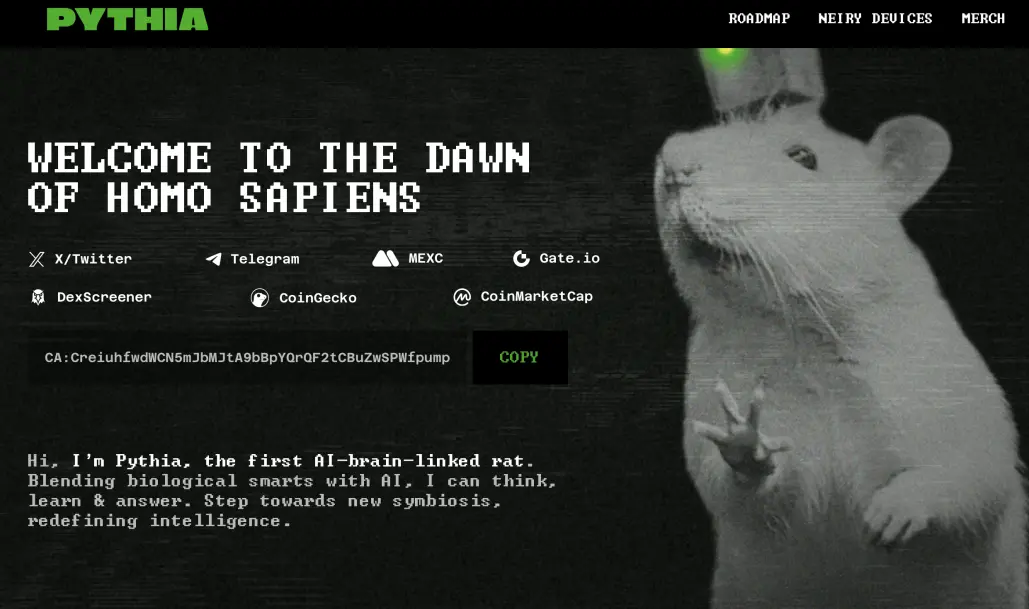 NeiryLab-Pythia official website
NeiryLab-Pythia official website
Another major innovation of the Python project lies in its "thinking is mining" system. Users can convert brain activities such as meditation and concentration into token rewards by wearing the EEG headband developed by Neiry Labs. This "biological StepN" model transforms the activities of the human cerebral cortex into economic value, creating a new way to acquire digital assets. Meanwhile, Neiry Labs has launched two revolutionary devices - Mind Tracker and Brainy headsets, providing users with brainwave monitoring and stress management capabilities. These devices not only help users reduce emotional interference in cryptocurrency transactions, but also improve attention and decision-making capabilities by monitoring brain activity in real time. Paying equipment fees with $PYTHIA tokens can also enjoy discounts, further promoting the practicality and liquidity of the tokens.
The vision of the Python project goes far beyond the token economy. Neiry Labs is developing Neural Data Oracle technology to convert brainwave signals into verifiable sources of randomness, thereby facilitating the deep integration of blockchain and biological data. In addition, the laboratory also plans to launch a cognitive enhancement DApp store based on real-time brainwave data to provide users with applications such as meditation, learning and mental health optimization. These technological breakthroughs not only laid the foundation for the future development of brain-computer interfaces, but also provided possibilities for the rise of the "consciousness economy". Python can be a model for the combination of Web3 and brain-computer interfaces. In addition, in the context of US-Russia cooperation, the potential cooperation between Python and Elon Musk's Neuralink is also worth looking forward to.
3.2 DeSci's future development direction
DeSci is reshaping the underlying logic of human knowledge production along a disruptive path. The core of this change lies in building a global scientific research network that transcends geographical boundaries and breaks through power monopoly through dual innovations of technical tools and collaborative paradigms.
3.3.1 DeSci + AI Agent——Reshaping the paradigm for scientific research
With the deep integration of DeSci and AI Agent (artificial intelligence agent), scientific research is ushering in an unprecedented paradigm shift. DeSci breaks the centralized barriers of the traditional academic system through blockchain technology and realizes the transparency, verifiability and openness of scientific data; while AI Agent uses its powerful data processing capabilities and automation functions to inject new efficiency and insight into scientific research. The combination of the two will not only accelerate the process of scientific discovery, but will also redefine the way of scientific research collaboration.
In the future, the combination of DeSci and AI Agent will give birth to a series of innovative applications. For example, a smart contract-based scientific research fund allocation system can evaluate the feasibility and potential influence of projects through AI Agent to ensure efficient utilization of resources; a decentralized scientific research collaboration platform can use AI Agent to realize peer review, and collaborate across disciplines and regions to break the island effect of traditional scientific research; even AI Agent can also predict emerging research fields by analyzing global scientific research data, providing scientists with forward-looking research directions.
3.3.2 From Funding Research to implementation, build a sustainable scientific ecosystem
At present, DeSci's core focus is still on the raising and distribution of scientific research funds, and the transparency and decentralization of capital flows through blockchain technology. However, as the DeSci ecosystem gradually matures, participants and supporters are no longer satisfied with simple ideas and visions, and they are more looking forward to seeing practical results that can be implemented and perceived value returns. Therefore, the future development of DeSci must transform from "Funding Research" to "application implementation" and build a sustainable scientific ecosystem that can not only stimulate innovation vitality but also achieve actual output.
Taking the Asian market as an example, DeSci's current main activities are concentrated in the fields of scientific research fundraising and donation. This model is often regarded by Asian users as a "negative concept" in the context of cultural differences between the East and the West, resulting in its relatively low acceptance in this region. However, the Asian market not only has strong purchasing power, but also contains huge innovation potential, which is an important force that cannot be ignored in the global scientific ecosystem. In order to reverse this bias, DeSci needs to pay more attention to the display of actual results and allow Asian users to truly feel its value through local promotion strategies. For example, DeSci can carry out in-depth cooperation with Asian research institutions, enterprises and communities to promote more scientific research projects that meet local needs, such as the modernization of traditional Chinese medicine and environmental governance technology, thereby winning wider recognition and support.
In this way, DeSci can not only break cultural barriers, but also build a solid user base in the Asian market and inject new vitality into the sustainable development of the global scientific ecosystem.
4. Deepening summary: DeSci's paradigm revolution and future landscape
DeSci (Decentralized Science) is disrupting the core links of scientific research - funding models, knowledge sharing mechanisms and intellectual property management - through blockchain technology. Although the current industry scale is still in its early stages, its explosive power has far exceeded the iteration speed of traditional scientific research systems. This change is not only an application of technology, but also a return to the essence of science democratization and globalization. Its impact will penetrate the dual boundaries between the scientific community and the blockchain industry and reshape the future of human knowledge production.
Nevertheless, any new thing that is nurtured in the development of the times needs to be viewed from a dialectical point of view. Taking Bio Protocol as an example, a sample audit of 1,200 experimental programs on its platform in 2023 showed that only 68% passed basic peer review, significantly lower than the industry benchmark of 85% of traditional journals. This double-edged sword effect of "data democratization" exposes the fragility of quality control mechanisms under the open collaboration model - when the entry threshold for scientific research processes is lowered, unverified "spam data" may pollute knowledge commons in the name of decentralization. The more essential challenge lies in the lag of the legal framework: 23% of IP-NFT transactions on the Molecule platform were forced to be suspended due to the conflict of jurisdictions in identifying on-chain intellectual property carriers, reflecting the current regulatory system's cognitive gap in the new thing "tokenization of scientific research assets". These contradictions reveal a deep paradox: DeSci tries to use technical means to deconstruct the authoritative system of traditional scientific research, but it inevitably needs to build a new trust infrastructure and rule consensus.
- Three core reconstruction and breakthrough practices
-
Decentralization of funding models: 70% of traditional research funding is limited by government or corporate agendas, while DeSci allows funds to flow to truly value-driven projects through DAO crowdfunding, IP tokenization (such as Molecule's IP-NFT) and community governance. For example, VitaDAO has funded a total of 50 longevity research projects through tokenized crowdfunding, of which 3 have entered the clinical trial stage, far exceeding the early project conversion rate of traditional biomedical funds.
-
Upgrading of the knowledge sharing paradigm: Through NFT papers (such as DeSci Labs) and open source protocol libraries (such as Bio Protocol), the reuse cost of scientific research data is reduced by 80%, and the global collaboration efficiency is increased by 4 times. In 2023, the average number of citations on-chain papers reached 7.2 times, 3 times that of traditional journals, proving that open sharing can substantially accelerate scientific progress.
-
On-chain revolution of IP management: DeSci migrates intellectual property from closed patent systems to programmable smart contracts. For example, Pfizer converts early drug discovery research into IP-NFT through the Molecule platform, achieving 40% optimization of R&D costs, and original contributors can obtain a continuous share of 15% in the commercialization stage, completely breaking the industry chronic disease of "inventor poverty".
2. Growth Flywheel: Triangular Driver of Technology, Capital and Policy
-
The technology stack is mature: From the data layer (Arweave permanent storage) to the application layer (LabDAO distributed laboratory), the DeSci technology stack has supported 90% of scientific research processes to be put on the chain. In 2023, DeSci developer activity (GitHub commits) increased by 220% year-on-year, surpassing the growth rate of DeFi during the same period.
-
Structural capital migration: Traditional venture capital (such as a16z, Digital Currency Group) and pharmaceutical giants (such as Bayer and Novartis) have injected more than US$420 million into DeSci, while 35% of the funds flow to scientific research nodes in developing countries, promoting the rebalancing of global innovation networks.
-
Regulatory sandbox takes shape: The EU's "Digital Science Act" draft clearly proposes recognition of the legitimacy of DAO governance. Singapore and other places have opened up tax exemptions channels for scientific research tokens, and policy dividends are opening up a compliance market of hundreds of billions of yuan.
3. Challenge and breaking path
-
Technology-Academic Dividend: Currently only 12% of scientific researchers are familiar with blockchain tools, but products like DeSci Labs’ “No Code DAO Creator” are lowering the threshold for participation by 70%.
-
Short-term speculative risk: Although the transaction spread of small and medium-sized market capitalization projects is as high as 8%, the pledge rate of top agreements (such as Ocean Protocol) is stable at more than 65%, indicating that a long-term value consensus is forming.
-
Regulatory Game: The SEC launched a survey on 17% of DeSci projects, but the industry successfully incorporated 83% of projects into the compliance framework through the Utility Token for Science design.
4. The next decade: From edge experiments to mainstream infrastructure
According to ARK Invest, by 2030, the DeSci market size will exceed US$50 billion, covering 30% of global early scientific research projects. Its evolution may be divided into three stages:
-
2023-2025 (infrastructure explosion period): IP tokenization protocols and decentralized peer review systems (such as DeReview) complete standardization, pushing the market size to exceed US$5 billion;
-
2026-2028 (vertical integration period): The first DeSci unicorn with a valuation of over US$10 billion will appear in sub-tracks such as biomedicine and climate science, and 20% of the content of traditional journals will be migrated to the chain;
-
2029-2030 (Paragraph Dominant Period): The DeSci model solves at least 3 global scientific problems (such as Alzheimer's disease therapy) and becomes the core source of scientific research funding in 70% of developing countries.
DeSci's ultimate goal is not to replace traditional scientific research, but to build a "global scientific collaboration network" through the democratization of technology. Here, Brazilian botanists can instantly call Norway's gene database, African medical discoveries can quickly obtain commercial transformation through DAO, and every data contributor will obtain permanent benefits through smart contracts. When scientific breakthroughs are no longer subject to geography, institutions or capital monopoly, mankind may usher in the greatest collaborative revolution after the Internet: the production and distribution of knowledge, for the first time, truly belonging to all mankind. But this change requires a "gap of death" that is bound by technological ideals and reality. Only by establishing a sustainable value capture mechanism, an inclusive governance framework and compliance path can DeSci evolve from marginal experiments to the next generation of scientific research infrastructure.
Acknowledgements
Thanks during the planning and writing of this articleDr.UZThe in-depth participation and professional advice helped us improve the structure and content of the article, and its valuable opinions played an important role in the smooth completion of this article.
5. References
-
https://www.coingecko.com/learn/what-is-desci-decentralized-science
-
https://www.panewslab.com/zh/articledetails/pzyj45j8yc66.html
-
https://finance.sina.com.cn/blockchain/roll/2024-12-22/doc-ineaiuqr0285206.shtml
-
Seyhan, A. A. (2019). Lost in translation: the valley of death across preclinical and clinical divide–identification of problems and overcoming obstacles.Translational Medicine Communications, 4(1), 1-19.
-
Bio Protocol.https://www.bio.xyz/.
-
Neirylab-Pythia. https://ratpythia.ai/
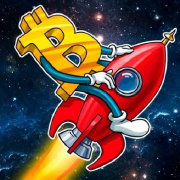












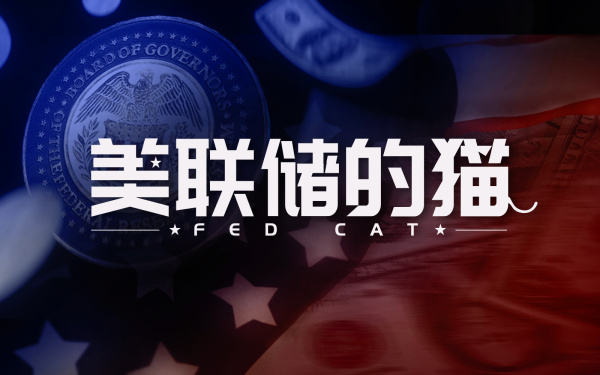


No comments yet